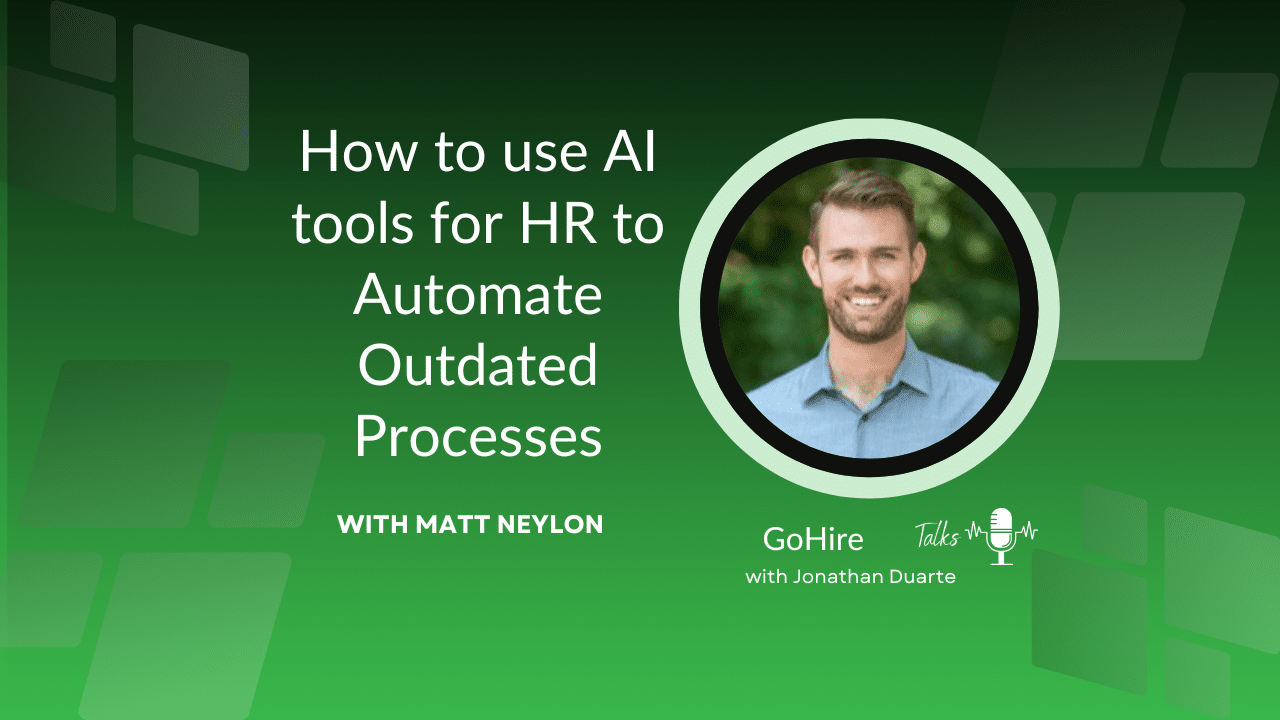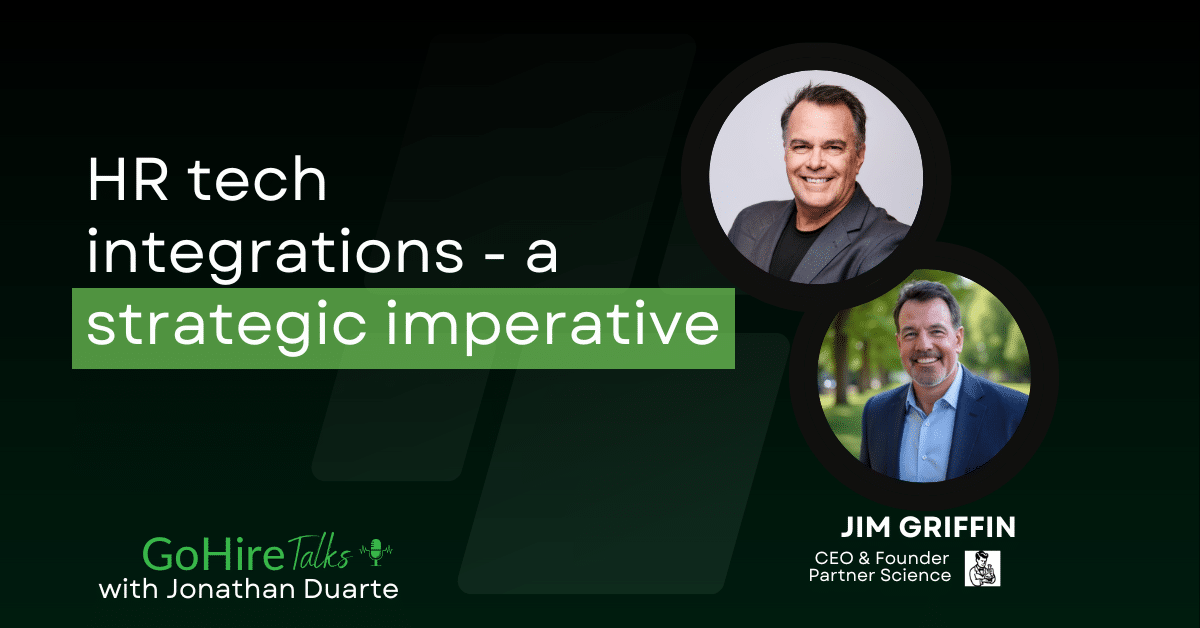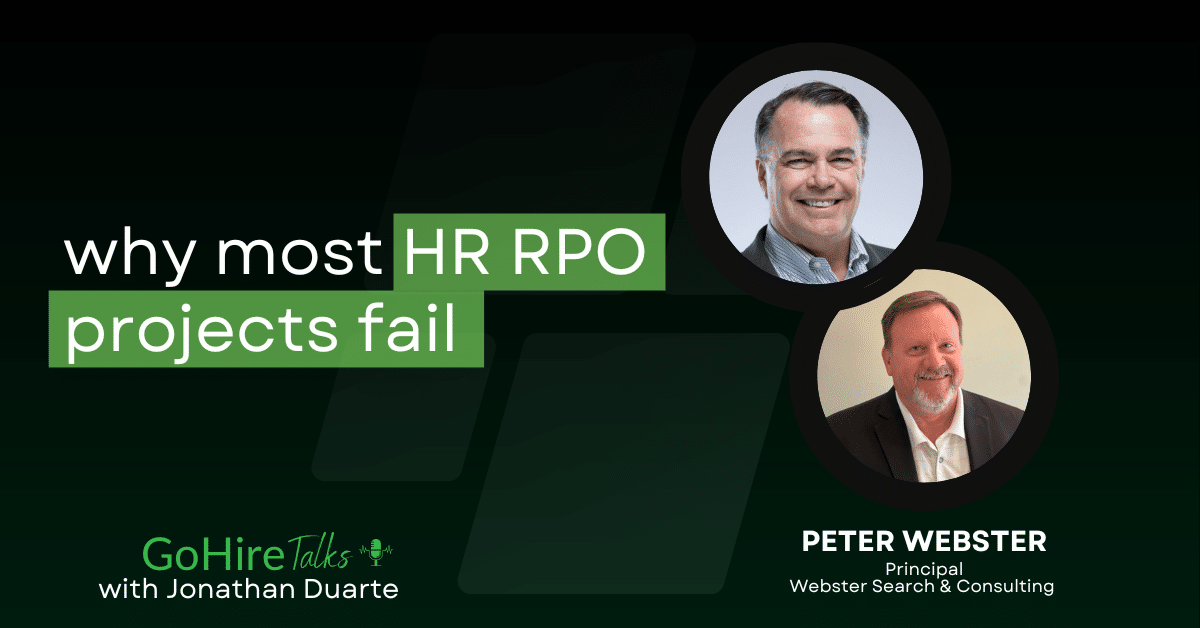
In this episode of GoHire Talks, I sat down with Matt Neylon, HR leader at The Mount Vernon School, to explore how HR teams can stop drowning in outdated, manual tasks and start saving serious time with automation and AI tools for HR. Matt shares his post-pandemic journey—from battling burnout in education to mapping processes with sticky notes to using lightweight tech like project boards and chatbots to overhaul onboarding and recruiting.
We dive into how generative AI in HR is making strategic work more accessible and how even small teams with limited resources can find high-impact wins. Whether you’re still buried in emails or just trying to keep the lights on in your ATS, Matt’s pragmatic approach to AI for HR solutions offers a blueprint for taking the first step without blowing your budget or your mind.
This is not about replacing HR—it’s about giving HR professionals their time (and sanity) back.
Key Insights from the Episode
🔍 Key Insights from the Episode
Start with friction: Document what’s burning out your team—then automate that.
You don’t need fancy software: AI tools for HR can be as simple as project boards or basic chatbots.
You can’t automate what you can’t write down: Process mapping is the foundation of automation.
Onboarding is the perfect pilot project: Small improvements = big time savings.
HR + IT = Power Team: Partnership is essential to scaling any AI solution.
Don’t forget about energy: The best automations reduce emotional and cognitive load—not just time.
Strategic time must be scheduled: Book time now to work on what will save you hours later.
From Clogged Emails to Smart Systems: Automation Tools for HR to Cut Through Chaos
Matt’s first big win came from automating their teacher onboarding process. With onboarding requiring coordination between HR, IT, and L&D—and involving up to 50 tasks—his team was drowning in email threads and miscommunication.
“So we realized that with employee onboarding there’s anywhere from 20 to 50 tasks that we need to do. It touches multiple departments. It touches L&D, HR, IT, and we just needed a better way to communicate, instead of sending each other emails, saying, oh, their email is set up. It was so inefficient.”
They broke down the process visually, got alignment on responsibilities, and implemented a simple task management tool that triggered the next step automatically. It wasn’t fancy, but it was fast—and highly effective.
Generative AI in HR: Real-World Wins from Onboarding to Recruiting
While automation was the starting point, generative AI is now part of the day-to-day toolkit. One major pain point? Interview scheduling and coordination.
Question: What’s a lesson you learned about optimizing candidate interviews?
Matt shared: “ We would get five people on a screen call and a lot of smaller nonprofits or smaller businesses do this. Everyone wants to meet the candidate, right? And so we get all these people on a screening call. We had to figure out their calendars. That took a bunch of time. Then you’re wasting six hours worth of labor for people to sit through and in five minutes. They knew if the candidate was going on or not. It was pretty obvious 90% of the time.”
So, they flipped the process. One screener records the call, AI tools summarize the discussion, and team members review key clips on their own time. It saves hours and accelerates decision-making.
You Can’t Automate What You Can’t Write Down: Mapping HR Processes That Matter
Before introducing new tech, Matt emphasizes mapping every process first. Get in the room. Pull out the sticky notes. Talk through the edge cases. Then—and only then—should you look for software. AI for HR solutions only work when the logic behind them is sound.
And this isn’t just about big wins. Sometimes the biggest time savers are low-effort, low-risk tweaks: a chatbot to field common HR questions, a better report from your HRIS, or automated reminders for key milestones.
AI for HR Solutions Doesn’t Have to Be Expensive or Complicated—Here’s Why
You don’t need a PhD in data science to start using AI in HR. Most HR pros didn’t come up through tech—and that’s okay.
“The other thing you have to realize about the HR profession, very few of us have degrees in hr. Like a lot of people came into this from a different angle. So while I have a four year degree to be a teacher, I took a four month class and a four hour test to become an HR professional. Most of us have had to focus on the operational, the urgent. Very few of us had classes in the strategic and the important.”
That’s why it’s crucial to carve out time to be strategic, even if it’s just a couple hours a week. Matt’s advice? Schedule that block now, or it’ll never happen.
Benefits of Automation in HR: Save Time, Energy, and Sanity
HR isn’t just about saving time—it’s about saving energy. Matt makes this distinction clear. Sometimes the most painful processes aren’t the ones that take the longest, but the ones that drain the most mental energy.
Matt also pointed out a truth many learned during the pandemic: “If the pandemic taught us anything, it’s that we can’t afford to be reliant on one person.”
Automation helps distribute responsibility, spot single points of failure, and keep work moving even when someone’s out.
About our guest Matt Neylon
A huge thanks to Matt Neylon for joining us on GoHire Talks!
Matt is an HR leader at The Mount Vernon School, where he’s helping redesign outdated HR systems using AI and design thinking.
📬 Contact: Matt Neylon on LinkedIn


 06 October, 2025
06 October, 2025


